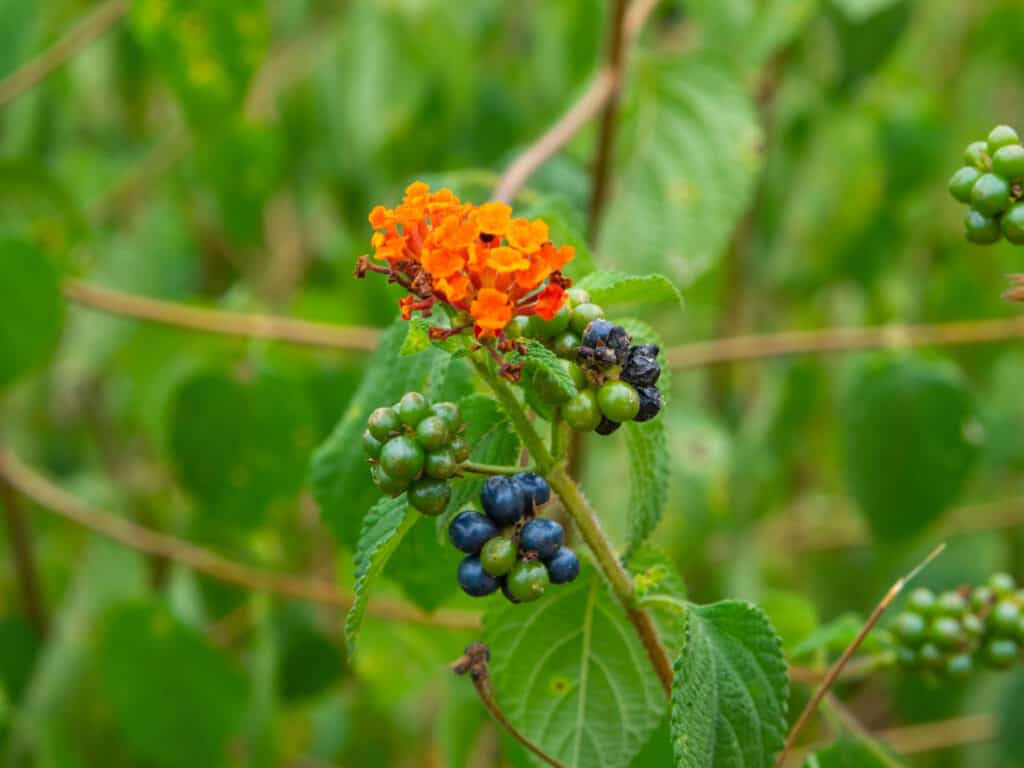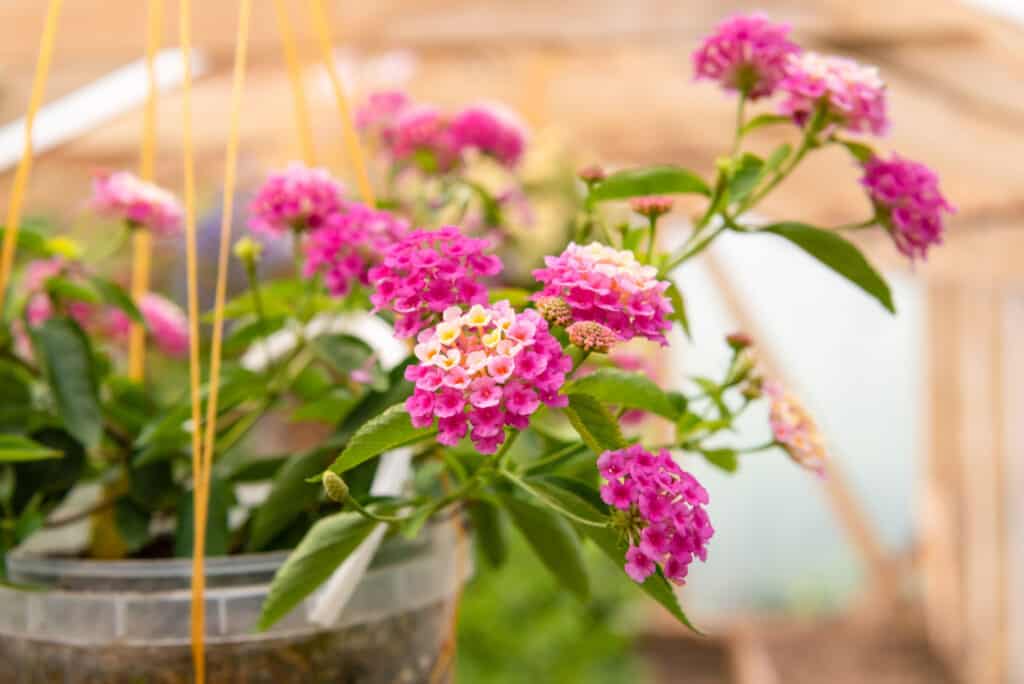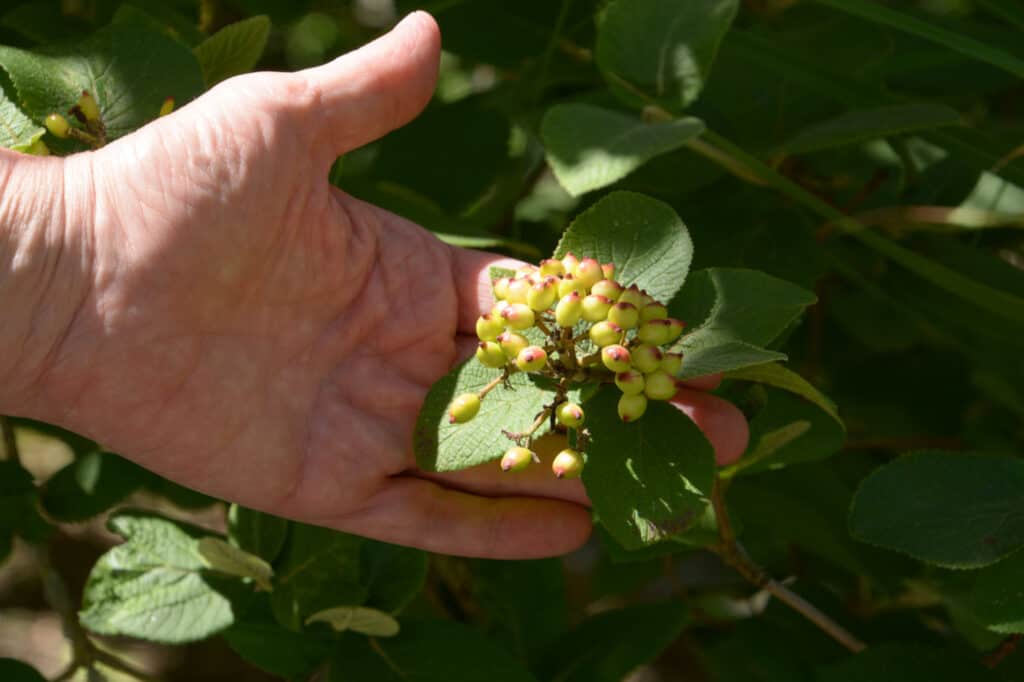Choosing to grow lantana seeds may have several benefits for your backyard garden. Not only does lantana attract many important pollinators such as butterflies and bees, but it is also a striking ornamental plant with beautiful flowers! But can you grow lantana from seed, and what varieties or cultivars grow best in your particular region?
While lantana is easily propagated from existing plants, you can also grow lantana from seed. To assist with germination, scarification or soaking of the seeds for up to 24 hours is recommended. Otherwise, you can start your lantana seeds indoors three months before your final frost date, or directly sow your seeds outside when frost dangers have passed in the spring. Growing indoors is recommended, given the long germination time of lantana seedlings.
If you want to grow these fantastic flowers in your backyard, here’s how to do it, step by step.

While lantana is easily propagated from existing plants, you can also grow lantana from seed.
©Rati Siregar/Shutterstock.com
| Lantana Seeds | How to Grow |
|---|---|
| Hardiness Zones | 3 through 11; considered an annual in cooler regions, but typically grown as a perennial |
| Popular Lantana Varieties | “Confetti,” “Buttonsage,” “Popcorn,” “New Gold,” “Dallas Red,” “Radiation” |
| Time of Year to Germinate Seeds | Two months before your final spring frost date; start indoors |
| Seed Preparation | Soaking or scarifying your seeds often improves germination rates |
| Things to Note | Make sure that lantana isn’t invasive in your region, as it has a prolific growth habit! |
Everything You Need to Know About Lantana Seeds

Lantana flowers form berries.
©Daolauong Kamkhom/Shutterstock.com
Largely considered one of the easiest plants to grow, lantana can be grown from seed just as well as from propagation or cuttings from a neighborhood plant. However, there’s something important to note about lantana, especially if you plan on growing it from seeds that you harvested from an existing plant rather than from a garden center or seeds distributor.
Similarly to hydrangeas, lantanas do not grow true to seed, or accurate to their parent plants. This essentially means that, should you choose to plant seeds from an existing plant, you may not get a duplicate plant in terms of coloration and appearance. However, lantana grows easily enough that it might be fun to experiment with all of the different varieties out there!
Also, be sure to check whether or not lantana is considered an invasive plant in your area. It is a prolific grower and may be limited to container planting only, depending on your region.
Popular Lantana Varieties

Lantana is a
butterfly
magnet.
©Sari ONeal/Shutterstock.com
There are countless varieties and cultivars of the lantana plant, largely separated into categories based on size and growth habit. Here are some of the most popular cultivars for you to consider, depending on your region and what you are looking for in terms of flower color!
- “Confetti” — Just like its name implies, the “Confetti” cultivar of lantana grows with multiple colored pedals and flower clusters, typically found in red, pink, and yellow. It grows extremely quickly and is fairly cold hardy.
- “Buttonsage” — Also known as wild sage, the “Buttonsage” variety of lantana is a great choice for those of you seeking a pure white flower and soft, delicate leaves. This plant reaches roughly 5 feet by 5 feet when fully grown.
- “Popcorn” — Compact compared to other varieties, “Popcorn” lantana produces fantastic drooping fruit, typically in a violet or lavender color. The flowers are also showy and smell quite pleasant.
- “New Gold” — A great trailing variety of lantana, “New Gold” is covered in bright yellow flowers that attract countless pollinators. It is ideally used as ground cover or a border plant.
- “Dallas Red” — Also more compact, the “Dallas Red” variety of lantana produces bright red and yellow flowers, often looking as if the shrub is on fire! It is perfect for ornamental container planting or borders.
- “Radiation” — Large and drought tolerant, the “Radiation” lantana variety has unique red and yellow flowers that radiate different colors outward in their flower clusters. This makes a fantastic ornamental hedge for any garden.
Germinating and Growing Lantana from Seed

Lantana plants are easily propagated.
©Valeriia Duggan/Shutterstock.com
If you are planning on growing lantana plants from seed, here’s how to do it, step by step.
- Scarify or soak your seeds. Lantana seeds take a long time to germinate, and not all of them will be viable. Soaking them for up to 24 hours in warm water, or otherwise scarring or damaging their thick outer coating, will help ensure results.
- Fill containers with alternative potting soil. Lantana plants are highly drought-tolerant and prefer a mixture of different soil types, such as peat, rocks, and sand.
- Sow several seeds, just barely under the soil. Given that many lantana seeds are not viable, make sure to plant a few different ones in a single container. Cover the seeds lightly.
- Keep the seeds above 70 degrees Fahrenheit, and wait. Make sure to cover all of your planted seedlings after you water them, and use a plastic dome or bag to promote moisture and humidity. Lantana seeds need to be kept warm to germinate properly, so give them a heat mat or place them on a sunny windowsill. These little guys need roughly two months to germinate, so give them time!
- Once seedlings have sprouted, replant in a larger container outside. You may want to give your seedlings a moment to adjust to outdoor temperatures, but lantana plants are fairly hardy overall. So long as your outdoor temperatures are appropriate, you can plant these little guys outside once they pop up out of their soil!
Harvesting Lantana Seeds

Lantana berries can be replanted.
©Martina Simonazzi/Shutterstock.com
Lantana plants produce obvious berries where their flowers once were. These berries are actually seed pods, containing multiple lantana seeds. Here’s how to harvest them, when the time is right.
- When your berries turn purple or black, it is time to harvest. Carefully remove these seed pods from your Lantana plants and bring them inside.
- Gently open the seed pods and release the seeds. You may want to do this on a white piece of paper or in a location where you can safely catch the seeds, as they are small and easy to scatter!
- Let your seeds dry, and store them in an envelope. Many experts recommend keeping your lantana seeds in a cold location such as a refrigerator until you are ready to use them. However, leave your seeds to dry for a few days to ensure that they will not mold during storage!
Which Animals Eat Lantana?

While butterflies are attracted to lantana, the plant is toxic to many other animals.
©iStock.com/jamesdvdsn
Lantana is known to attract pollinators such as bees, butterflies, and birds. Species of birds that flock to the plant to eat its fruit include hummingbirds, satin bowerbirds, pied currawongs, silvereyes, and Lewin’s honeyeaters. Birds enjoy the flowers’ nectar and berries, and can disperse the seeds as they are unaffected by the toxins in lantana, unlike many other animals.
All parts of lantana — including the berries, leaves, and flowers — are toxic and poisonous to a large range of animals including dogs, cats, horses, pigs, goats, cattle, sheep, rabbits, chickens, and guinea pigs. Lantana contains pentacyclic triterpenoids, which can cause stomach upsets in small doses and liver damage in larger amounts (seen in livestock such as cattle and horses, when they graze on lantana and consume a large amount over time). Animals ingesting lantana can suffer nausea, vomiting, pain in their abdominal regions, diarrhea, and difficulty breathing. Eating it can also lead to a buildup of phylloerythrin levels in the skin, which results in sensitivity to light.
Lantana is also madly toxic to young children. There have been instances of ingestion of the plant causing vomiting and diarrhea. If a child ingests lantana, immediately call a medical professional or poison control center for assistance.
To minimize the risk of children and animals coming into contact with lantana, plant it in area where kids and pets do not play or place it out of their reach in hanging baskets.
The photo featured at the top of this post is © Rati Siregar/Shutterstock.com
Sources
- Seed dormancy, storage behavior and germination of an exotic invasive species, Lantana camara L. (Verbenaceae)., Available here: https://www.cabdirect.org/cabdirect/abstract/20133066049
- Lantana invasion: An overview, Available here: https://onlinelibrary.wiley.com/doi/abs/10.1111/j.1445-6664.2005.00178.x
Thank you for reading! Have some feedback for us? Contact the AZ Animals editorial team.






